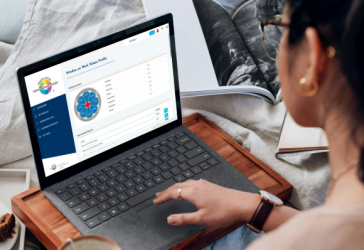The Window on Work Values (WoWV) Profile helps individuals and teams understand what underlies their behaviour at work and how those values align or conflict with the culture, systems and expectations around them.
Grounded in validated research from Rokeach, Schwartz and Triandis, the WoWV provides a practical way to align individual values, team behaviour and organisational direction. It focuses not on how people prefer to work, but why they work the way they do, uncovering beliefs that shape their motivation, relationships and decision-making.
The WoWV profile explores eight distinct value types within a two-dimensional model: Self vs Group Focus and Organisational Constraint vs Freedom. The eight value types are: Individualism, Collectivism, Authority, Independence, Conformity, Equality, Empowerment and Compliance.
The WoWV helps teams and leaders:
- Turn abstract values into practical behaviours
- Navigate differences without conflict or confusion
- Align everyday actions with strategy, culture and purpose
Leaders see that no value exists in isolation. The WoWV model is structured in a circular format where adjacent values are complementary, and those opposite can create tension.
Why values matter at work

Values don’t live in posters or handbooks, they show up in structures, incentives, policies and the way decisions are made. Teams often experience tension not because of personality differences, but because of unspoken values mismatches. When there is clarity and alignment, work flows more easily. When values are misaligned with how things are done, trust erodes, energy is wasted and delivery suffers.
Alignment does not require identical values. Research shows that sustainable alignment is achieved through understanding, knowing where values align, where they differ and what that means in context. Posner and Kouzes (The Leadership Challenge) found that leaders who are clear about their personal values are more effective at navigating difference, leading to stronger engagement and commitment.
The WoWV empowers leaders to make value-conscious decisions, recognising when to lead from their values, when to stretch beyond them, and how to navigate potential internal conflicts with intentionality and integrity.
Get started with WoWV

To access the WoWV you can enlist the services of one of our associates who are accredited in the profile, or you can become accredited to deliver a WoWV debrief yourself.
Through an Accredited Practitioner gain access to TMS Global, our product delivery platform and:
- Answer the WoWV Questionnaire
- Read your WoWV Profile report
- Attend a debrief with your Accredited Practitioner
Our other profiles
Team Management Profile (TMP)
Building Capable Teams: COLLABORATE
The Team Management Profile (TMP) is a science-based feedback tool designed for personal, team, and leadership development. It integrates work-focused feedback to help individuals understand their work styles and improve collaboration. Underpinned by models that combine work and people contexts, TMP offers a holistic view of work preferences, enhancing performance at individual, team, and organisational levels. By promoting understanding and leveraging personal insights, TMP fosters effective teamwork and high-performance environments.
Opportunities-Obstacles Quotient (QO2) Profile
Building Capable Teams: CALIBRATE
The Opportunities-Obstacles Quotient (QO2) Profile is a unique tool designed to determine how individuals balance their efforts between seeing opportunities and obstacles, which influences their approach to risk. By enhancing team dynamics, it helps individuals understand their predispositions, manage responses to change, explore risk orientations, and build resilience. This comprehensive assessment aids leaders in improving decision-making, problem-solving, and goal clarification, ultimately enhancing their competitive advantage.
Linking Leader Profile (LLP|360)
Building Capable Leaders: LEAD
The Team Management Systems (TMS) view on leadership emphasises the importance of relationships. The Linking Leader Model identifies 13 essential Linking Skills across three levels: People Linking, Task Linking, and Leadership Linking. These skills are crucial for effective teamwork and leadership, ensuring sustainable high performance. The LLP|360 tool measures these skills and integrates them with established leadership theories, such as Transformational and Situational Leadership, to enhance leadership development programs.


